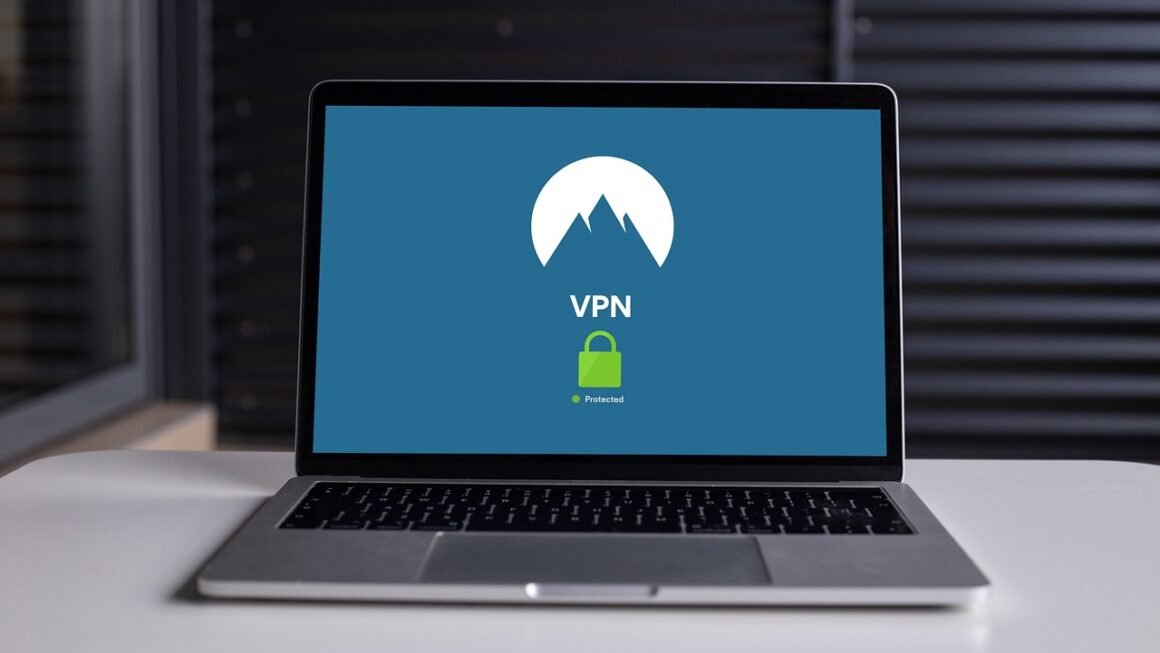In today’s hyper-connected world, cyber threats are no longer a matter of “if” but “when.” Organizations of all sizes face an ever-evolving landscape of sophisticated attacks that can disrupt operations, damage reputations, and result in significant financial losses. Simply having cybersecurity measures in place isn’t enough. True protection lies in building robust cyber resilience – the ability to not only prevent attacks but also to withstand, recover from, and adapt to adverse cyber events. This blog post delves into the critical aspects of cyber resilience and provides actionable strategies to fortify your organization’s defenses.
Understanding Cyber Resilience
What is Cyber Resilience?
Cyber resilience goes beyond traditional cybersecurity by focusing on an organization’s ability to maintain essential functions even during a cyberattack. It’s about preparedness, response, and recovery. Consider cybersecurity as a shield designed to deflect attacks, while cyber resilience is a survival kit ensuring the organization can still function, adapt, and thrive even when the shield is breached. Key components include:
- Prevention: Implementing security measures to reduce the likelihood of successful attacks.
- Detection: Establishing systems to rapidly identify and analyze cyber incidents.
- Response: Having a well-defined plan to contain, eradicate, and recover from attacks.
- Recovery: Restoring normal operations and data following an incident.
- Adaptation: Learning from past events to improve future resilience.
Why is Cyber Resilience Important?
A strong cyber resilience posture is vital for several reasons:
- Minimizes Downtime: By quickly recovering from attacks, organizations can reduce disruptions and maintain business continuity. Imagine a hospital hit by ransomware. A resilient system allows them to quickly isolate the infected systems, restore from backups, and continue providing patient care, minimizing potentially life-threatening delays.
- Protects Reputation: Effectively managing cyber incidents can mitigate reputational damage and maintain customer trust. A transparent and efficient response to a data breach, for example, can demonstrate to customers that the organization is taking the situation seriously and working to protect their data.
- Reduces Financial Losses: Cyberattacks can result in significant financial losses due to downtime, data recovery costs, legal fees, and regulatory penalties. Cyber resilience strategies can help minimize these costs. For example, having robust data backups and a tested recovery plan can prevent the need to pay a ransom to retrieve encrypted data.
- Ensures Regulatory Compliance: Many industries are subject to regulations that require organizations to implement cybersecurity measures and have incident response plans in place. Compliance with frameworks like GDPR or HIPAA often requires demonstrably resilient systems.
- Enhances Competitive Advantage: Organizations with strong cyber resilience are more likely to be trusted by customers and partners, giving them a competitive edge in the marketplace.
Building a Cyber Resilience Framework
Risk Assessment and Management
- Identify Critical Assets: Determine the organization’s most valuable assets, including data, systems, and infrastructure. What assets would cause the most damage if compromised?
- Conduct Threat Modeling: Analyze potential threats and vulnerabilities to understand the attack vectors that could be used against the organization. This includes understanding common attack methods like phishing, malware, and denial-of-service attacks.
- Prioritize Risks: Rank risks based on their likelihood and potential impact. A common method is a risk matrix assigning a “high”, “medium”, or “low” rating based on these factors.
- Develop Mitigation Strategies: Implement security controls to reduce the likelihood and impact of identified risks. This could include implementing multi-factor authentication, patching vulnerabilities, and segmenting networks.
- Regularly Review and Update: The risk assessment should be a living document, regularly reviewed and updated to reflect changes in the threat landscape and the organization’s environment.
Implementing Security Controls
- Technical Controls: Implement technical security measures such as firewalls, intrusion detection systems, antivirus software, and data encryption. Using a next-generation firewall with intrusion prevention capabilities provides a layered defense against common threats.
- Administrative Controls: Establish policies and procedures to govern security practices, including access control, password management, and incident response. A clear acceptable use policy, regularly reviewed and enforced, is crucial.
- Physical Controls: Secure physical access to data centers and other critical infrastructure. This includes measures like security guards, access badges, and surveillance cameras.
- Regular Security Audits and Penetration Testing: Conduct regular security audits and penetration testing to identify vulnerabilities and assess the effectiveness of security controls. A penetration test simulates a real-world attack, revealing weaknesses in the organization’s defenses.
Incident Response Planning
- Develop an Incident Response Plan (IRP): Create a detailed plan that outlines the steps to be taken in the event of a cyberattack. The IRP should define roles and responsibilities, communication protocols, and escalation procedures.
- Establish a Communication Plan: Define how the organization will communicate with internal and external stakeholders during an incident. This includes employees, customers, partners, and regulators. Designated spokespeople should be identified and trained.
- Conduct Regular Training and Exercises: Train employees on incident response procedures and conduct regular tabletop exercises to test the plan. Simulated phishing campaigns can help employees identify and report suspicious emails.
- Incident Reporting and Analysis: Implement a system for reporting and analyzing security incidents to identify trends and improve future response efforts. A Security Information and Event Management (SIEM) system can automate this process.
- Post-Incident Review: After each incident, conduct a thorough review to identify areas for improvement in the incident response plan and security controls. This “lessons learned” exercise is vital for continuous improvement.
The Role of Technology in Cyber Resilience
Data Backup and Recovery
- Implement Regular Data Backups: Back up critical data regularly and store backups in a secure, offsite location. Consider the “3-2-1 rule”: three copies of your data, on two different media, with one copy offsite.
- Test Recovery Procedures: Regularly test the data recovery process to ensure that data can be restored quickly and effectively. A failed restoration can be as damaging as the initial attack.
- Implement Data Replication: Consider using data replication to create real-time copies of data in a secondary location. This can provide faster recovery times than traditional backups.
- Utilize Cloud-Based Backup Solutions: Cloud-based backup solutions offer scalability, redundancy, and cost-effectiveness.
Security Information and Event Management (SIEM)
- Centralized Log Management: SIEM systems collect and analyze security logs from various sources to provide a centralized view of security events.
- Real-Time Threat Detection: SIEM systems can detect and alert on suspicious activity in real-time, allowing organizations to respond quickly to potential threats.
- Automated Incident Response: SIEM systems can automate certain incident response tasks, such as isolating infected systems or blocking malicious IP addresses.
- Compliance Reporting: SIEM systems can generate reports to demonstrate compliance with security regulations.
Endpoint Detection and Response (EDR)
- Advanced Threat Detection: EDR solutions use advanced analytics and machine learning to detect sophisticated threats that may evade traditional antivirus software.
- Endpoint Visibility: EDR provides visibility into endpoint activity, allowing security teams to investigate and respond to threats effectively.
- Incident Response Capabilities: EDR solutions provide tools for isolating infected endpoints, collecting forensic data, and remediating threats.
- Threat Intelligence Integration: EDR solutions often integrate with threat intelligence feeds to provide context and insights into emerging threats.
Building a Cyber-Aware Culture
Employee Training and Awareness
- Regular Security Training: Provide regular security training to employees to educate them about common threats and best practices for protecting sensitive information. Training should cover topics such as phishing, password security, and social engineering.
- Simulated Phishing Campaigns: Conduct simulated phishing campaigns to test employees’ ability to identify and report suspicious emails. This is a powerful way to reinforce training and identify areas for improvement.
- Promote a Culture of Security: Encourage employees to report suspicious activity and security concerns. Create a blame-free environment where employees feel comfortable reporting mistakes.
Leadership Involvement and Commitment
- Executive Sponsorship: Secure executive sponsorship for cyber resilience initiatives. Leadership support is essential for driving cultural change and ensuring that security is a priority across the organization.
- Allocate Resources: Allocate sufficient resources to support cyber resilience efforts, including funding for security tools, training, and personnel.
- Communicate the Importance of Security: Communicate the importance of security to all employees and stakeholders. Reinforce the message that security is everyone’s responsibility.
Conclusion
Building cyber resilience is a continuous process that requires ongoing investment, planning, and commitment. By understanding the key principles of cyber resilience, implementing appropriate security controls, and fostering a security-aware culture, organizations can significantly improve their ability to withstand, recover from, and adapt to cyberattacks. In today’s threat landscape, cyber resilience is not just a best practice – it’s a necessity for survival. Remember to regularly assess your organization’s risks, update your security measures, and train your employees to stay ahead of evolving cyber threats. Embrace a proactive approach, and you’ll be well-positioned to navigate the complexities of the digital world with confidence.



